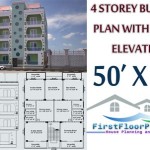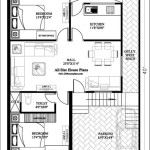DIY Cubby House Plans: A Comprehensive Guide
Building a cubby house is a rewarding project that provides children with a dedicated space for imaginative play. Careful planning is essential for a successful outcome. This guide offers valuable insights into creating DIY cubby house plans, covering various aspects from design considerations to material selection.
The initial stage involves determining the desired size and style of the cubby house. Consider the available space in the yard and the age of the children who will be using it. A smaller footprint is suitable for compact yards and younger children, while older children might benefit from a larger structure with multiple levels or features like a slide or climbing wall. Sketching initial ideas on paper can help visualize the final product.
Choosing the right materials is crucial for durability and safety. Common options include timber, plywood, and weather-resistant boards. Timber offers a classic look and robust construction. Plywood provides a cost-effective alternative, while weather-resistant boards are ideal for areas exposed to the elements. The chosen materials should be treated to withstand outdoor conditions and prevent rot or insect damage.
Detailed plans are necessary for a smooth construction process. These plans should include precise measurements for all components, including the base, walls, roof, and any additional features. Accurate measurements will ensure that all pieces fit together correctly and minimize waste. Free online resources and downloadable plans can serve as a starting point, but modifications might be necessary to suit specific requirements.
Constructing a solid base is essential for stability. A level platform made of concrete slabs, timber frames, or paving stones provides a stable foundation. The base should be slightly elevated from the ground to prevent moisture damage. Ensure the chosen base material is suitable for the weight of the cubby house and the anticipated activities within it.
Framing the walls and roof requires accurate cutting and joining of the chosen materials. Use appropriate fasteners, such as screws and nails, to secure the frame. Ensure the frame is square and plumb to prevent structural issues. Reinforce corners with bracing for added strength and stability, especially in areas prone to high winds.
Adding cladding to the frame provides a finished look and protects the interior from the elements. Weatherboarding, plywood sheets, or shiplap are popular cladding options. Ensure the cladding is properly sealed and secured to prevent water ingress. Consider adding insulation between the frame and cladding for improved temperature regulation within the cubby house.
Roofing options vary depending on the design and budget. A sloped roof allows for rainwater runoff and prevents water accumulation. Common roofing materials include asphalt shingles, corrugated iron, or timber shingles. Ensure the roof is securely attached to the frame and adequately waterproofed to prevent leaks.
Adding windows and doors enhances functionality and ventilation. Pre-hung windows and doors simplify installation. Ensure the openings are properly sealed to prevent drafts. Consider adding screens to windows to keep insects out while allowing for ventilation. Choose child-safe hardware for doors and windows.
Interior finishing touches can personalize the cubby house. Painting the walls in bright colors or adding decorative elements creates a stimulating play environment. Built-in shelves, benches, or a small table can provide additional play areas. Ensure all interior finishes are non-toxic and safe for children.
Safety considerations are paramount throughout the construction process. Use appropriate safety equipment, such as gloves, eye protection, and a dust mask. Ensure all exposed edges are sanded smooth to prevent splinters. Avoid using sharp objects or hazardous materials within the cubby house. Regularly inspect the structure for any signs of damage or wear and tear.
Landscaping around the cubby house can enhance its appeal and create a designated play area. Adding a pathway, a small garden, or a play area with sand or gravel adds to the overall experience. Consider planting shade trees around the cubby house to provide a cooler environment during hot weather.
Building a cubby house is a multi-stage project requiring careful planning and execution. Following these guidelines can contribute to a successful outcome, providing children with a safe and enjoyable space for imaginative play for years to come.

How To Build The Perfect Cubby House Make A

21 Three House Ideas Tree Plans Diy Designs

Top 10 Cubby House Plans In Roof Shingles For N Homes
:max_bytes(150000):strip_icc()/buildeazy-free-playhouse-plans-580e2afa3df78c2c734d8115.jpg?strip=all)
13 Free Playhouse Plans The Kids Will Love

60 Best Cubby House Plans Ideas Build A Playhouse Play Houses Outdoor

Homemade Cubby House Our Family Projects

Playhouse Plans Step By Construct101

Top 10 Cubby House Plans In Roof Shingles For N Homes

Build Your Own Children S Play House Home Hardware

Playhouse Plans Free Material List And Step By Instructions Play Houses Build A








